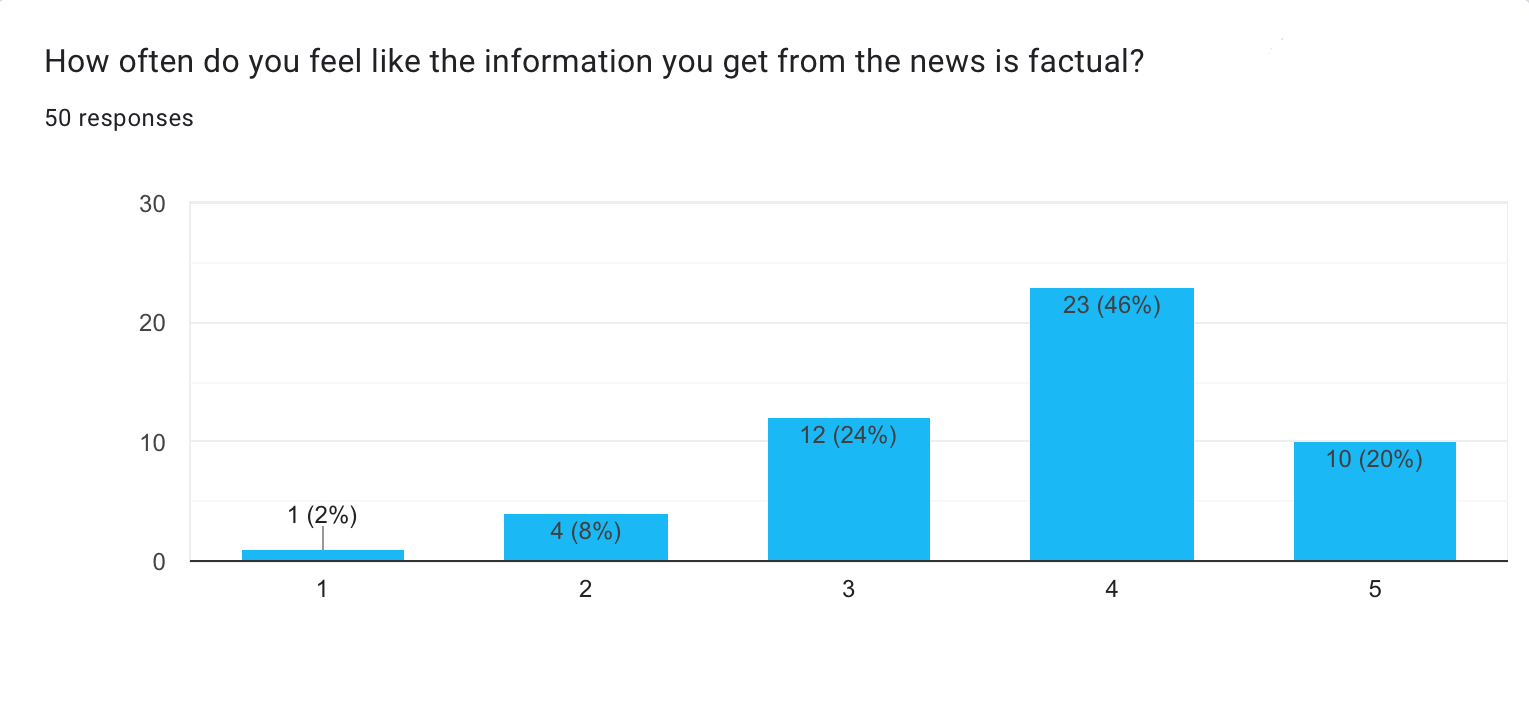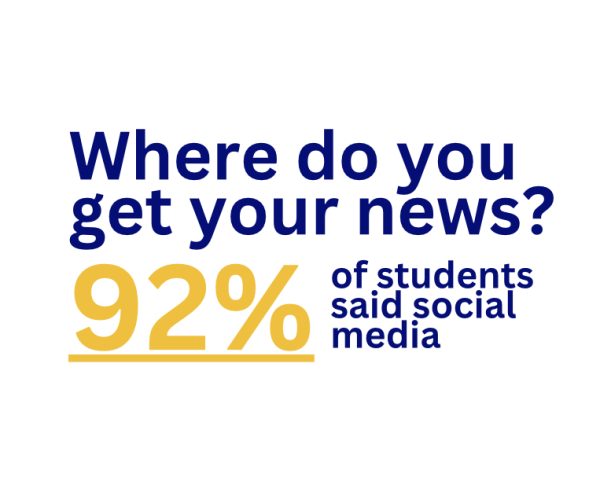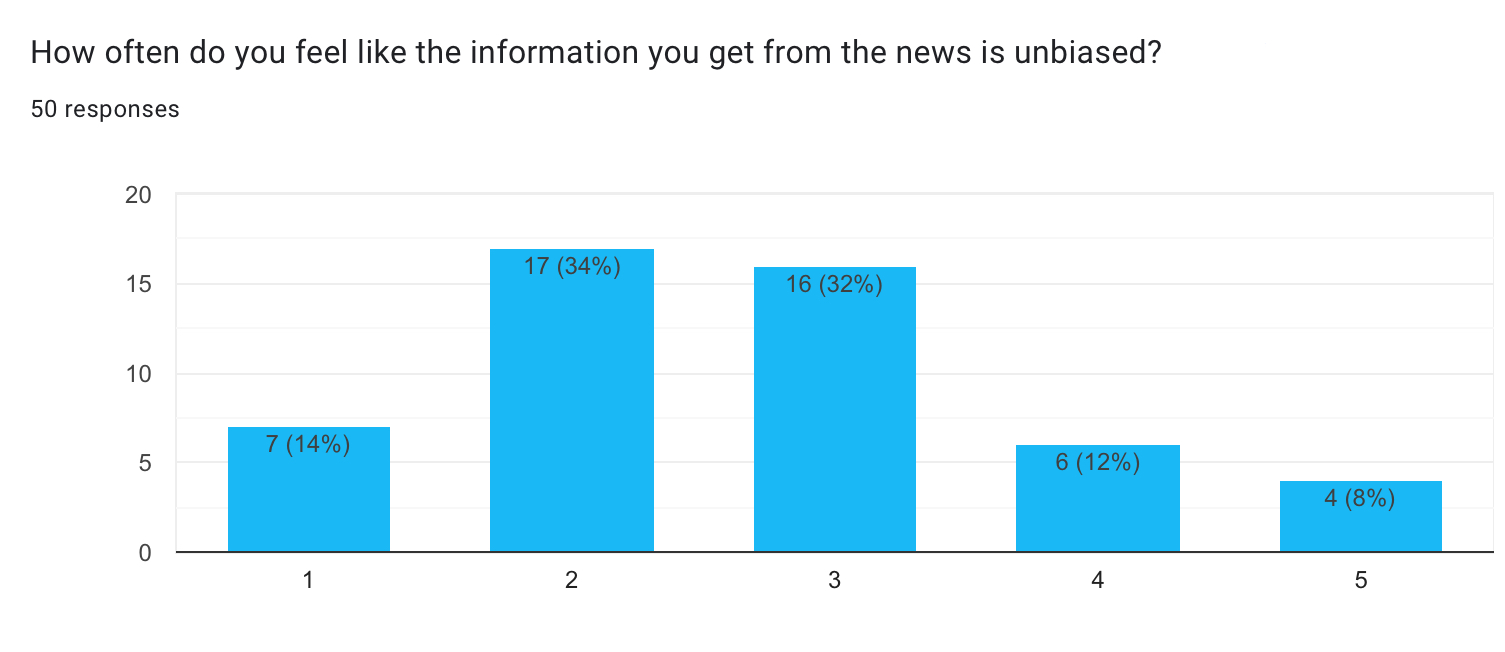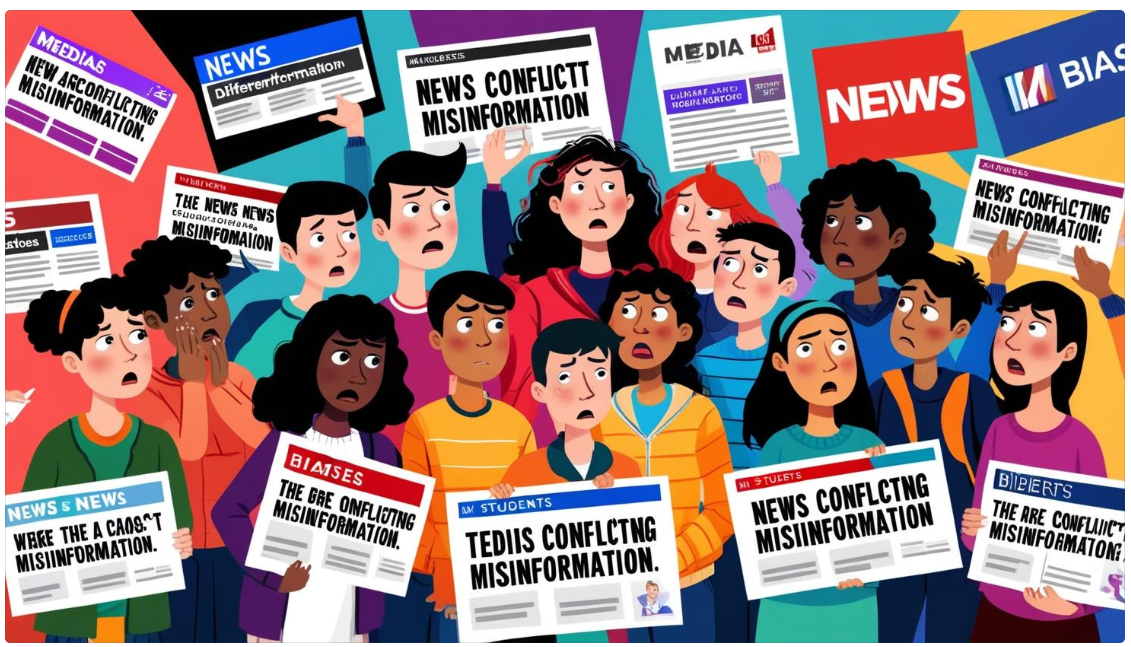If you turn on the TV and see a man in a three piece suit, chances are, you’re going to believe what he says. After all, he seems pretty trustworthy. He seems like he knows what he’s talking about.
But what if it’s not all true?
Bias in the news poses a pressing issue in today’s society of a seemingly infinite catalogue of up-to-date information. Especially with social media becoming a hot medium for news, when a person’s brain is bombarded with information, it can be hard to recognize when you are being manipulated to think a certain way.
After an extensive investigation polling 50 Norwin high school students, and an interview with Dr. Scott Polen, the following findings dive into the issue of media bias.
What is Media Bias?
Simply put, media bias can be defined as when journalists or news organizations allow their own opinions to influence the news or the way in which they report it.
“It’s important to understand that all media is told from a particular speaker’s perspective,” said Polen. “As a result of that, there’s bias everywhere.”
Big media outlets will never publish something untrue for fear of being sued for libel or defamation. Nearly everything you see is factual, but news corporations and executives have the power to influence how you receive your information. It’s in the way news is delivered where bias comes into play.

How Bias Affects News Coverage
All news outlets have executives, and like all people, they have their own personal opinions. The issue that currently exists within the industry is their opinions influencing the delivery of the news.
They control what airs, when it airs, and how it airs. All of these factors can influence a viewer’s beliefs.
We see this a lot within political media. Political opinions sometimes get in the way of good, old-fashioned news.
The thing with politics, however, is that while people want to receive all the information exactly how it is, they often just want to hear what they agree with, and these two things do not always mix. This places pressure on journalists to publish the right stories in the right way.
An easy outlet for news in recent times has been social media. It has allowed smaller companies and accounts to publish more news more efficiently to reach more people.
“Social media has enabled more diverse voices to be out there,” said Polen, “and as a result, there’s not as much of a common experience. You think about the 70s and 80s, you had three primary news channels, then you had your printed media, and that was primarily where you got your information.”

With television and radio broadcasting, if you weren’t tuned in for a particular story, odds were, you wouldn’t know about it. That’s where social media excels, viewers can see any article as soon as they open the app.
The issue is it can be hard to identify reliable sources. Obviously, the bigger outlets will always publish factual information because they could actually be sued, but smaller accounts have very little liability.
The fact of the matter is they could lie straight to your face and face no consequences. It could be even more riddled with subjectivity, and viewers need to be able to recognize bias especially in social media.
Real-World Examples
Here are some look-for’s when it comes to bias in the media:
Sources
Make sure you know where these outlets are getting their information. For example, if far-right opinions are being expressed using government and educational sources, whereas the opposing view uses less reliable sources, you can assume that the outlet is biased towards far-right views.
Stereotypes
If a story is riddled with negative stereotypes bashing a person or group, bias is present. For example, if an article makes an assumption about a person because of their race, religion, sex, etc., the journalistic objectivity is lost.
Tone
The journalist’s tone can be a huge red flag for the presence of media bias. Headlines can be a huge part of this.
During the Bill Cosby trials, these were two real headlines covering the same issue:
“Judge Allows Testimony of Another Accuser in Cosby Case,”
“Bill Cosby Sex Assault Trial: Judge Allows Only 1 Other Accuser to Testify, Not 13”
Now, you tell me: which one do you think is going to be more critical of Cosby?
Timing
News outlets have been known to put the most important stories at the beginning and the least important ones at the end. Identifying where a story shows up during the air time can be a good way to identify any bias in the news.
The Impact of Bias
Bias can be very polarizing, especially in the news. For the most part, if the bias adheres to the viewers’ opinions, they are bound to trust the media outlet way more than if it were to conflict. This is specifically evident in political news. Using a two-party system of government, the United States is susceptible to a polarized society where the two sides refuse to see eye to eye.
“It might radicalize people, when they only consume extremely biased media, leading to further political separation than we already are suffering from,” said sophomore Riley Baker.
In no way are these opinions kept out of the newsroom. While news anchors are supposed to deliver completely objective information, it is nearly impossible to eradicate bias.
Many believe that this two-party system is a danger to the country, dividing an already fractured society. While the bias in the news could be making this issue even worse, the trust it builds within parties cannot be overlooked.
News corporations will never stop incorporating bias into their service. It keeps viewers coming back for more when they agree with what is being said.

Combating Media Bias
Is there anything we can do to combat media bias?
“I think one can always assume there is bias at work, and that you are always on guard and doing your best to work through that,” Polen said.
It seems the only feasible way to combat media bias is to view the news with an open mind. Understand that everything you hear could be influenced by one’s opinions, so take it with a grain of salt.
I am aware that for me to write about media bias, it is ironic to include my personal experience in my research. However, in the process of interviewing, I was approached by a very passionate student.
“I feel like a 24-hour news network is not a good thing because if you’re going on air for 24 hours, you’re going to have to spread opinions as you don’t have enough facts to fill the time frame,” said this student. “I think you should just have like a 30-minute news network that gets you the facts; that’s what people need to be able to watch.”
Every solution is a possibility. It does not matter who you are, if you’re passionate enough about something, and you want something changed, you have the ability to make a change.
Combatting an omnipresent issue is difficult because it will always be there. The only way to combat it is by suppressing its influence on the viewer.
Media literacy courses can be found online. Many schools, including Norwin, make sure to teach young students the importance of media literacy.









